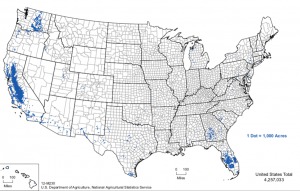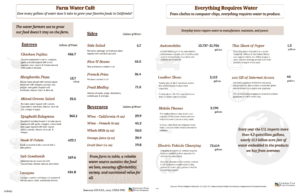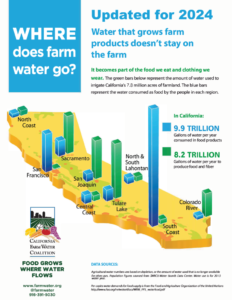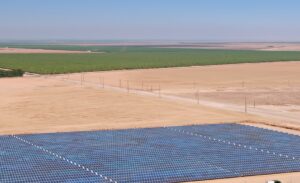Countdown: 2 Days to Drought
On Wednesday, the State Water Board will vote to remove enough water from the system to irrigate over 200,000 acres of farmland or meet the annual domestic needs of 2 million people every year. If approved, this action will lead to one of the most preventable droughts California has faced.
How Will This Impact Our Food Supply?
Simply put, less water for farms will mean less of the fresh, local produce our families depend on.
California farmers have proven incredibly resilient in drought situations, employing the latest technology to do more with less. However, while you can grow food with less water you can’t grow it with no water.
In conjunction with the Sustainable Groundwater Management Act, as much as 1 million acres statewide may be fallowed due to the combined impact of these two overlapping regulations. Just ONE acre of land can yield almost 100,000 pounds of tomatoes or 36,000 heads of lettuce. Imagine the impact on California-grown tomatoes, lettuce, oranges, avocadoes, apples, strawberries, grapes, almonds, peaches and more if we have one MILLION acres less to grow our food? You can’t support California’s world-class orchards without reliable water supplies from year to year. The Water Board’s answer? Grow different crops. But farmers grow the crops people want, not the ones the State Water Board’s policy dictates.

Will there be less produce available, higher prices, fruits and vegetables that are less fresh because they must be shipped in, or all three? It’s hard to know exactly at this point, but the impacts for California consumers will be measurable and will not be limited to freshness and availability.
Our food has to come from somewhere, right? So, if we have less California produce available, then what? If we decrease our capacity at home, we put the safety and reliability of our fresh food supply in the hands of other countries that do not grow food under the same strict regulations that we follow in California.
In addition, our environment will suffer. Importing food to replace what we don’t grow at home means more ships, moretrucks, and more pollution.
There’s still time to adopt compromise plans supported by water districts, scientists, education officials, health departments, farmers, farm workers, cities, economic development officials and others ready to implement solutions that science tells us will help.



